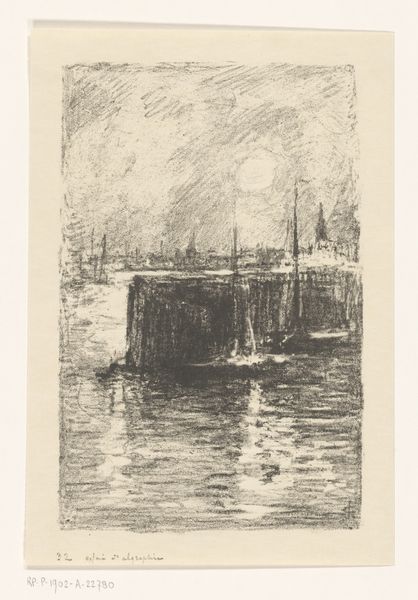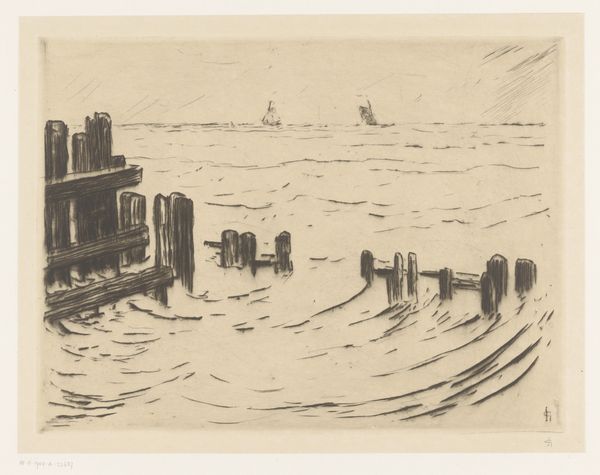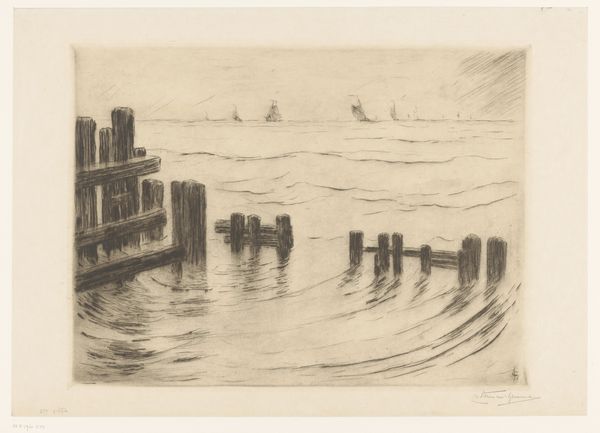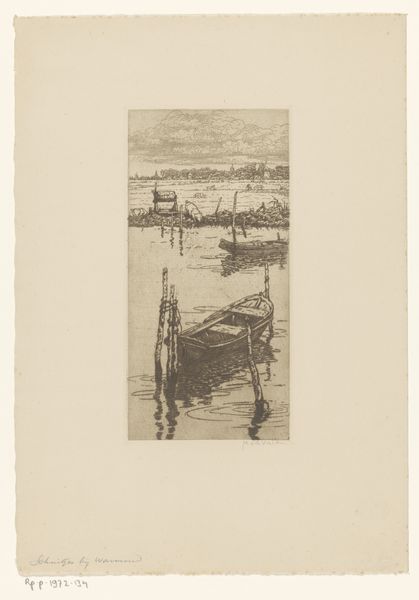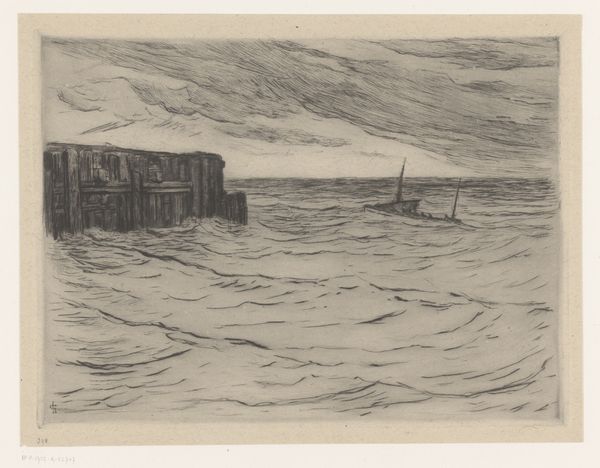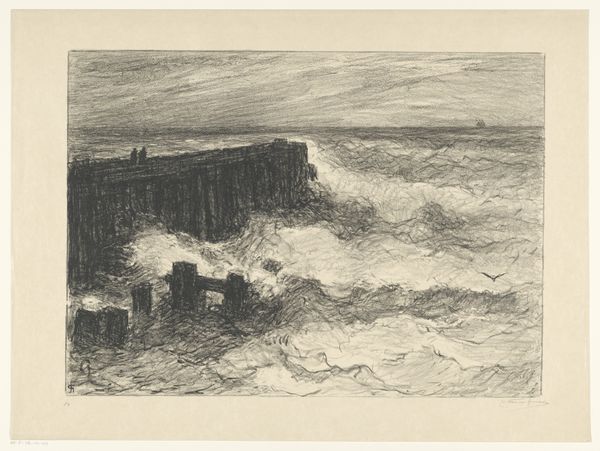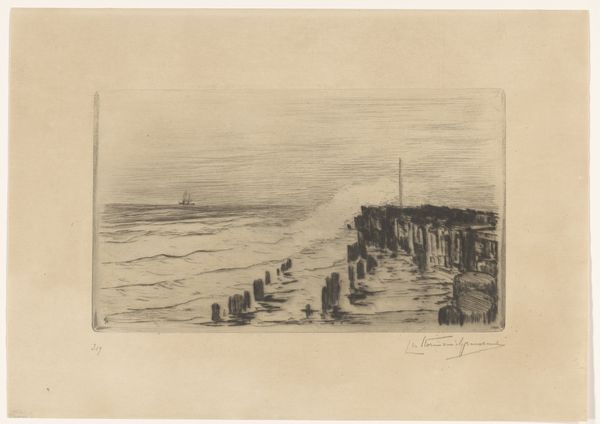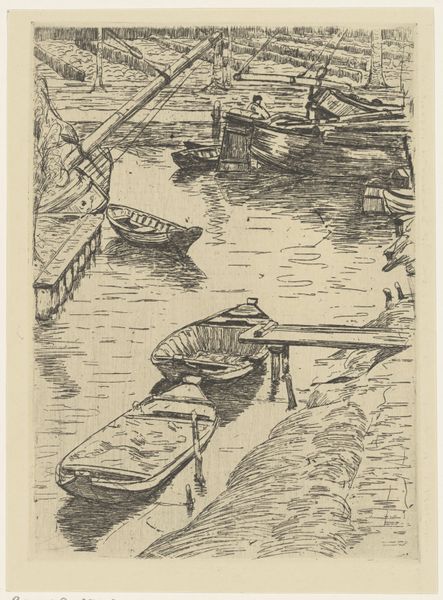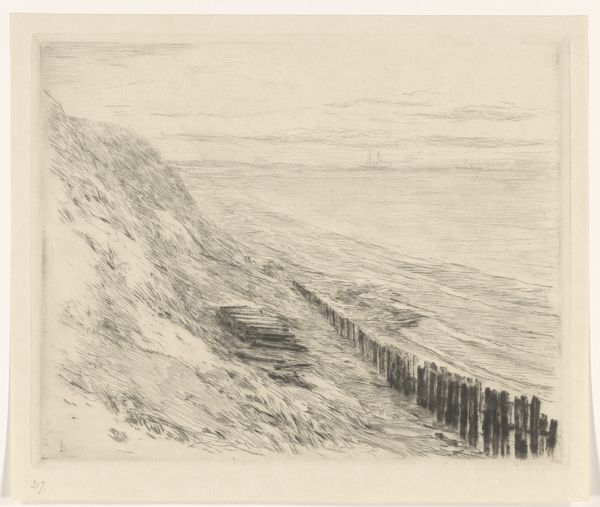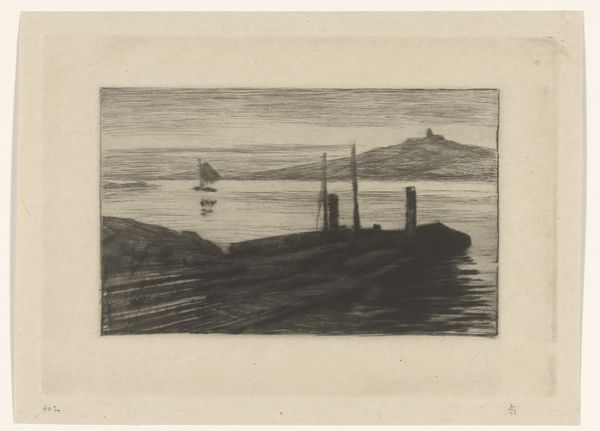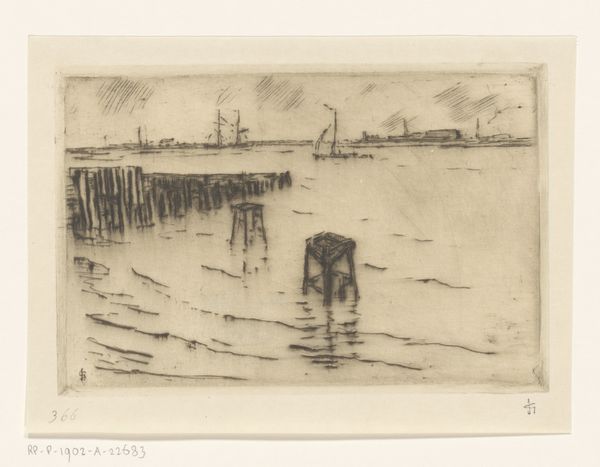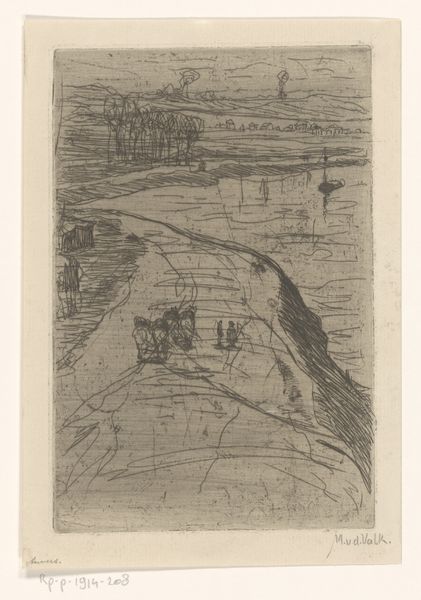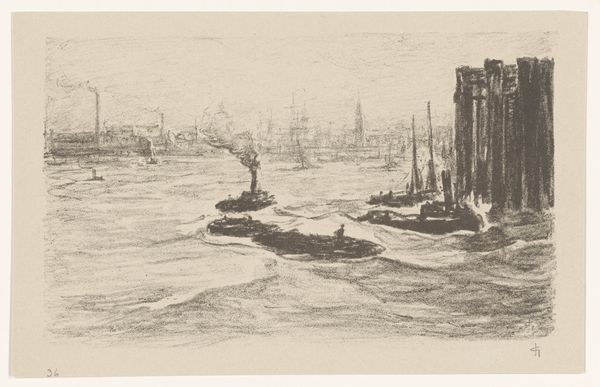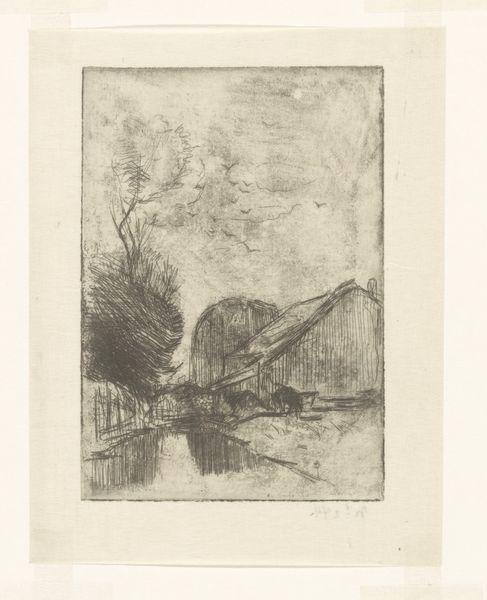
print, etching
#
dutch-golden-age
# print
#
etching
#
landscape
#
realism
Dimensions: height 228 mm, width 158 mm
Copyright: Rijks Museum: Open Domain
Editor: This is "Zeegezicht met pier bij Cuxhaven," or "Seascape with Pier at Cuxhaven," an etching by Carel Nicolaas Storm van 's-Gravesande, created sometime between 1851 and 1902. It feels so bleak, almost melancholic with its grays and the suggestion of industry meeting the sea. What strikes you when you look at it? Curator: The etcher’s skill in depicting atmosphere, in suggesting the industrial development within a traditional marine setting, that’s what grabs me. I’m particularly drawn to considering whose stories are validated, and whose are suppressed. It also brings to mind how artistic communities interacted and were affected by broader sociopolitical changes. It's hard not to view this without considering that pier as representative of expanding trade and the rise of the middle class. Do you think its presentation in the Rijksmuseum might give it a certain weight or authority it might not have had originally? Editor: That’s fascinating. It certainly changes my perspective, thinking about the museum's role in shaping our understanding of the piece, but why do you think that trade expansion is relevant here? Curator: Consider where this piece resides and what it implies. Museums select, interpret, and frame narratives for public consumption, often solidifying a certain political position or national identity. In this case, we may have to examine the rise of Dutch mercantile power in the 19th Century, including a potential association with colonial enterprises and emerging national identities. Does this etching endorse that political message, or perhaps offer a more ambivalent commentary? The setting seems somehow both romantic and polluted, don’t you think? Editor: It does! The smoke adds to the gloom, which does make you wonder if it is a celebration or a critique. I see it differently now. Curator: Indeed, viewing it within an art historical frame enriches our experience. This piece urges us to probe at the subtle interplay between the artistic expression and sociopolitical currents that sculpted not just the artwork, but its evolving significance.
Comments
No comments
Be the first to comment and join the conversation on the ultimate creative platform.
